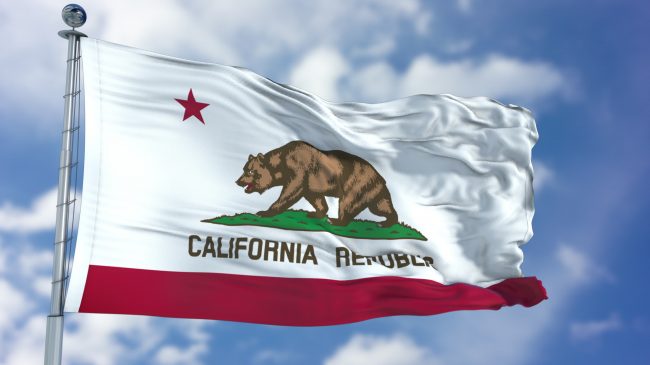
Overview of California’s Executive Branch of Government
They wield enormous influence and play a significant role by interpreting and applying the laws of the state
By Chris Micheli, March 8, 2019 7:10 am
The executive branch of California’s state government is set forth in Article V of the state constitution and is one of the three branches of state government, just like at the federal level. The major distinction is that the state has a governor and the federal government has a president. In both instances, however, they serve as the chief executive.
The following are the key provisions found in Article V affecting the Governor and his or her administration.
Section 1 vests the executive power in the Governor.
Section 2 provides that the Governor is elected every four years and must be a United States citizen and a resident of California for the past five years.
Section 3 requires the Governor to report to the Legislature each year on the condition of the State, usually referred to as the “State of the State” speech.
Section 4 provides the Governor can require officers and agencies to furnish information related to their duties.
CHRIS MICHELI DISSECTS CALIFORNIA LIKE NO ONE ELSE—ONLY ON THE GLOBE:
• Direct Democracy and California’s Constitution Article II
• The Legislature and California Constitution Article IV (part II)
• The Legislature and California Constitution Article IV (part I)
• The Governor and California’s Constitution Article V
• Everything You Thought You Knew About Lobbying is Probably Wrong
• Unique Aspects of California’s Electoral System
• Who Makes the Rules for the Judiciary?
Section 5 allows the Governor to fill a constitutional office vacancy by appointment, subject to confirmation by both the Assembly and Senate.
Section 6 authorizes a statute to allow the Governor to reorganize functions among state agencies other than the remaining constitutional offices (which are known as “Governor’s Reorganization Plans – GRPs”).
Section 7 provides that the Governor is the commander in chief of the militia and may call upon it to execute the laws of the state.
Section 8 provides the Governor authority to grant a reprieve, pardon and commutation, except for cases of impeachment.
Section 9 requires the Lieutenant Governor to have the same qualifications as the Governor. The Lieutenant Governor is the President of the Senate, but may only cast a vote on a tie.
Section 10 provides the Lieutenant Governor will become Governor when a vacancy occurs. He or she shall act as Governor during an impeachment, when the Governor is out of state, or the Governor has a temporary disability.
Section 11 provides that the Lieutenant Governor, Attorney General, Controller, Secretary of State, and Treasurer are elected at the same time as the Governor and are limited to 2 terms in office.
Section 13 provides that the Attorney General is the chief law officer of the state and it is his or her duty to uniformly and adequately enforce the laws of the state.
Section 14 provides that no state officer shall knowingly receive any salary, wages, commissions, or other earned income from a lobbyist or a lobbying firm. No state officer may accept any honorarium. The Legislature is required to enact laws that ban or strictly limit accepting a gift that would create a conflict of interest. The Legislature is required to enact laws that prohibit state officers, agency secretaries and department directors from lobbying the executive branch for 12 months after leaving office.
The executive branch of state government essentially has three levels:
- “Plural executives” – these are the nine constitutional offices that are elected statewide by the voters every four years.
- Independent agencies – these are the entities that, even though they may have appointees by the governor, serve independently from direct influence by the chief executive, such as the University of California, which is set forth in the state constitution and whose regents serve 12-year terms.
- “Line agencies” – these are the state agencies that report directly to the Governor, whose appointees are subject to a direct line of authority from the Governor’s Office and are appointed by him or her.
In terms of the line agencies, there are four types of entities in California state government: agency; department; board; and, commission. The agencies are the highest level, who are headed by an agency secretary appointed by the governor and who serve as members of the governor’s cabinet. These agencies also have a second-in-command, called the undersecretary, as well as deputy secretaries, all of whom are political appointees by the governor.
Under these agencies are numerous departments, all of whom are headed by a department director. These directors are supported by a chief deputy director and usually several deputy directors, all of whom are also political appointees by the governor. Just like the agency appointees, the department appointees are political appointees and are subject to confirmation by the state senate.
The boards and commissions are usually headed by an executive officer or board, all of whom are political appointees by the governor. These individuals usually report to a particular department and are usually subject to confirmation by the state senate.
In most instances, these agencies, departments, boards, and commissions have rule-making authority. In fact, there are over 200 of them in state government. And they often have enforcement authority over the individuals or entities that they regulate, with great diversity, such as funeral directors to barbers and cosmetologists. They also wield enormous influence in multiple ways and they often play the significant role by interpreting and applying the laws of the state.
Like it’s federal counterpart, the executive branch of government is one of three, co-equal branches and this branch is essentially in charge of “running the government” through these multitude of entities, beginning with agencies.
- Bonds and Undertakings in California - December 21, 2025
- Pleadings in Eminent Domain Cases - December 20, 2025
- Complaint Resolution in Child Support - December 20, 2025





One thought on “Overview of California’s Executive Branch of Government”